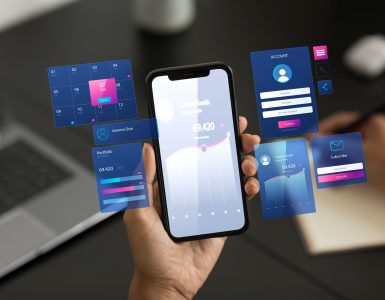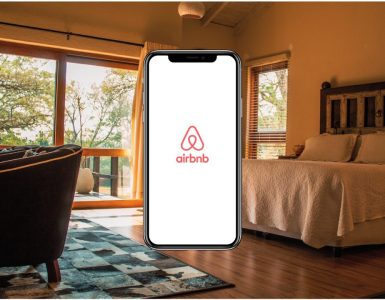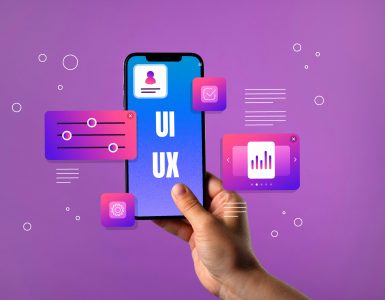Augmented reality (AR), after years of application in healthcare and other domains, is finding its application in mobile app development. The success of the mobile AR game Pokemon Go encouraged interest in including AR technology in app development. But make no mistake, the applications of this technology are not just in the entertainment sector. Apps across various categories are using AR to create a seamless user experience. Brands utilize this technology to offer customers options to try a product virtually before buying, and companies use AR for interactive advertising.
The adoption of AR technology is growing and is expected to reach a market valuation of $280 billion by 2028. Unsurprisingly, companies are interested in implementing AR technology in mobile app development.
This article explores the use of augmented reality in the app development industry.
What is augmented reality?
Augmented reality is the link between virtual data and the real world. While the technical definition of AR technology varies, here are the three characteristics it must have:
- It should combine the real world and virtual data in real-time
- Must be interactive in real-time, that is, offers the ability to users to interact with their virtual environment
- Provide a view of the world around us in 3D
AR technology is already widely available for healthcare and engineering applications. Given the high hardware performance requirement, incorporating augmented reality in mobile applications was not easy.
However, with the advancement of smartphone technology, it is now possible to have AR in app development. With the help of VR headsets and glasses, users can experience virtual reality like never before. These kinds of innovations have encouraged mobile app developers to experiment with augmented reality.
Types of AR mobile apps
It is necessary to define your business goals for augmented reality app development. There are several kinds of augmented reality apps, each with its unique set of features.
1. Marker-based augmented reality app
This mobile application uses augmented reality technology for image recognition or image marking. Once the app can identify an image or object, it further overlays digital information on the marker. The most common marker-based AR mobile apps are Google Lens and Snapchat.
2. Location-based augmented reality
Location-based AR mobile apps are also known as markerless applications. Instead of using image markers, these applications use GPS, accelerators, and compasses to create AR objects based on the user’s current location. Pokémon Go is an excellent example of how location-based augmented reality can be used in mobile app development.
3. Projection augmented reality apps
Such applications use complex algorithms and rely on visual odometry to identify an object’s precise location. Projection AR is part of car parking systems and uses built-in cameras in vehicles that collect data from multiple sensors to assist drivers. Architects and engineers also use this technology to better study construction sites.
4. Superimposition-based augmented reality apps
These applications are primarily used in healthcare and medicine. The superimposition-based augmented reality processes the actual image of the environment and then recognizes and overlays the created environment with the AR object.
How to choose an augmented reality SDK for app development?
You must choose the suitable development kit (SDK) to use augmented reality in app development. There are several tools available to choose from. Vuforia, Google ARCore, and Apple ARKit are some of the most widely used software development kits for including augmented reality in mobile applications.
Here are the factors you must consider when choosing an augmented reality SDK:
1. Cost
Augmented reality technology implementation in the mobile app can be expensive. If you are not working on a production-level application, we recommend you choose a free, open-source tool like Google ARCore. And, if you plan to build a complex mobile app with large and dynamic content, you can use paid SDKs like Vuforia.
2. Platforms
Whether you’re building an AR mobile app for iOS or Android, there are enough software development toolkits available for both platforms. The choice depends on your familiarity with the programming languages for each platform. You can use the Universal Windows Platform (UWP) kit to build applications for Windows smart devices.
3. Image recognition
A non-negotiable feature for any AR app, the chosen SDK must provide image recognition to identify objects, places, and images. 3D recognition and tracking is also an important feature that enables mobile applications to use AR technology to identify the more prominent spaces around the user, such as shopping malls, bus stations, and airports.
4. Unity support
Unity is arguably the most powerful game engine for creating video games, but it can also be utilized to make your AR mobile applications powerful. By using the powerful effects of this platform, you can create a cutting-edge user experience.
Conclusion
Augmented reality is a powerful technology with innovative and exciting app development applications. We hope this article gives you a starting point to explore AR technology for your mobile applications.
Talent500 is one of the most innovative remote team-building platforms helping Fortune 500 companies and fast-growing start-ups. Sign up here to join our elite pool of app developers.






Add comment